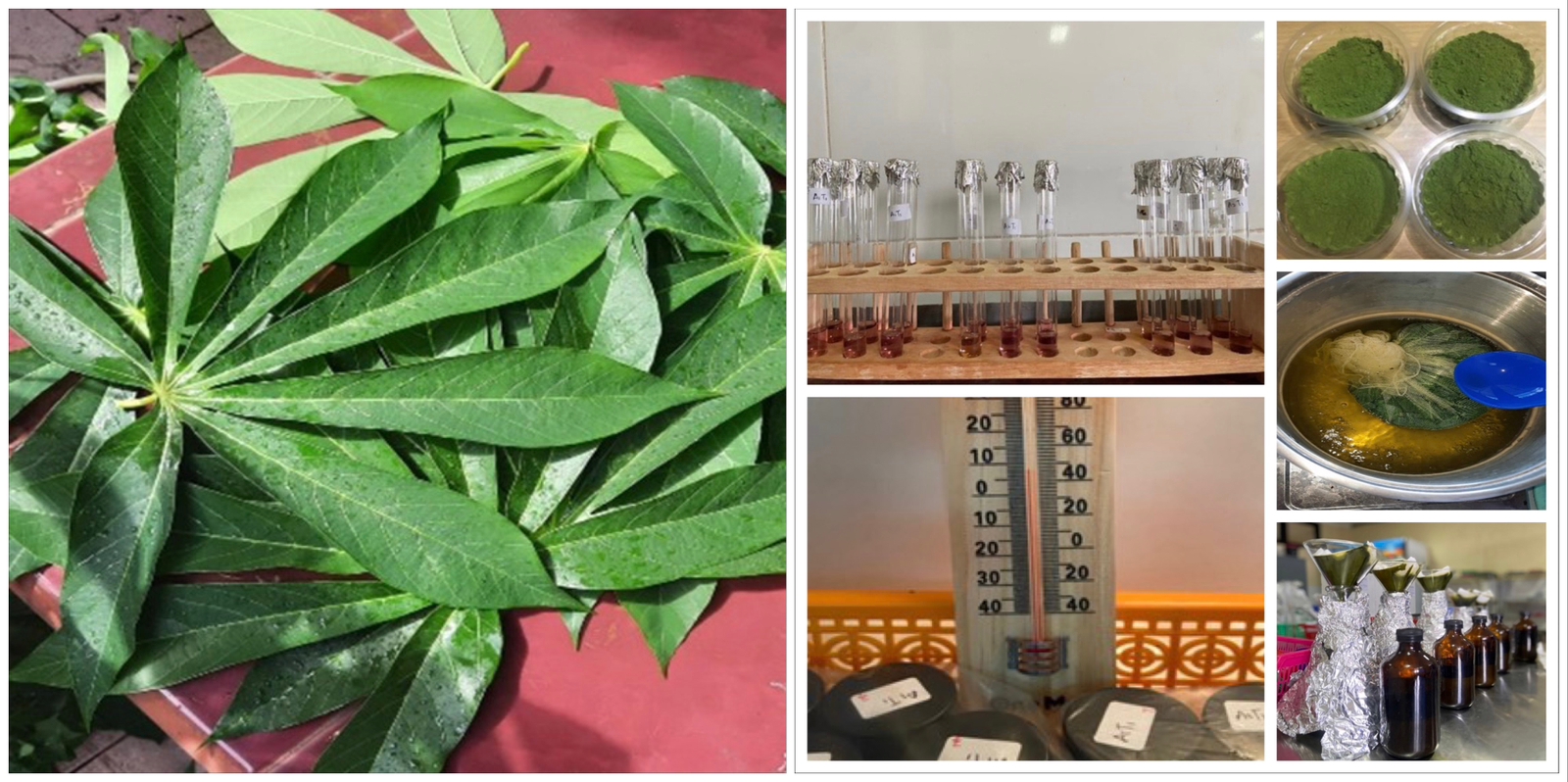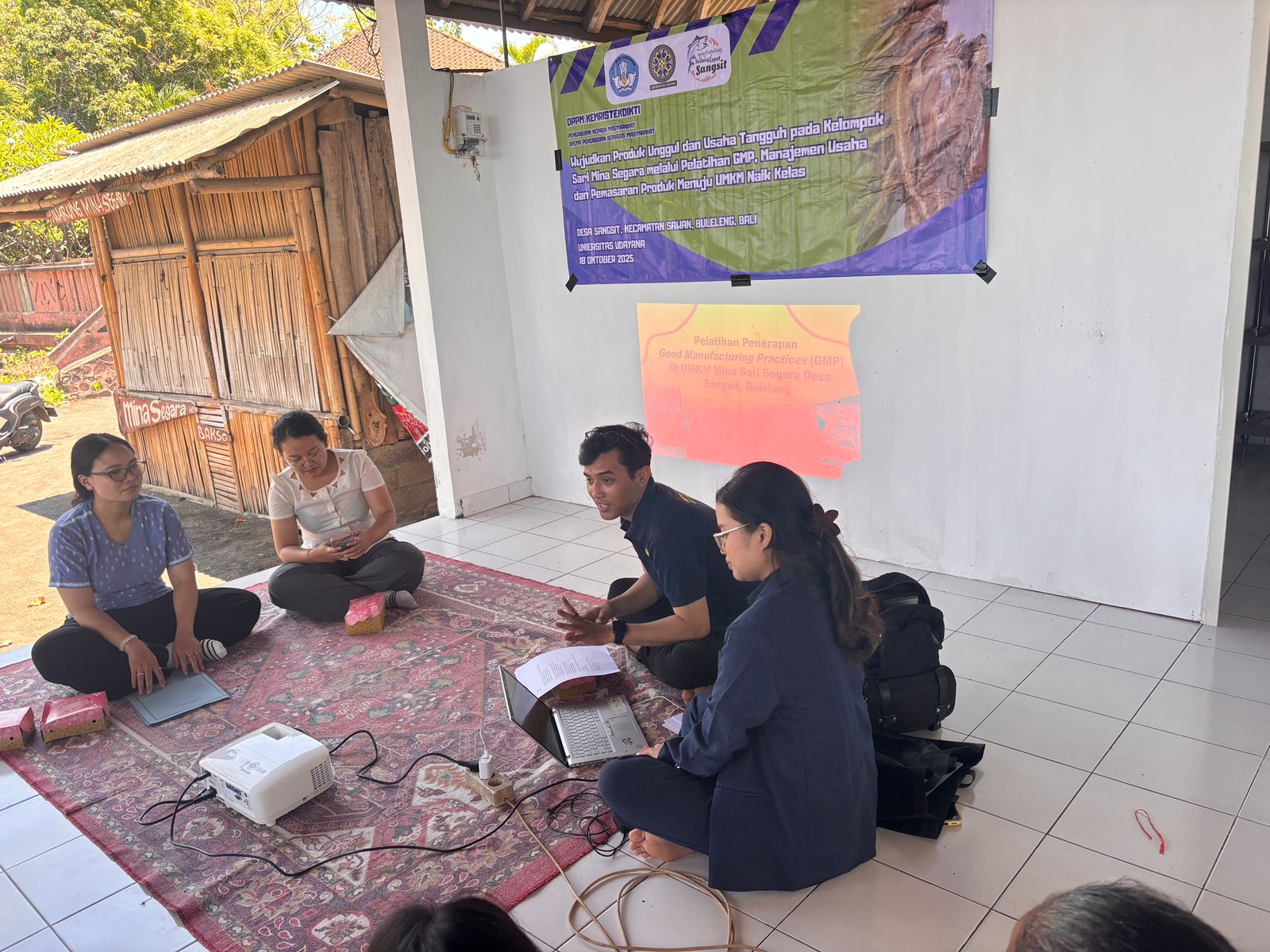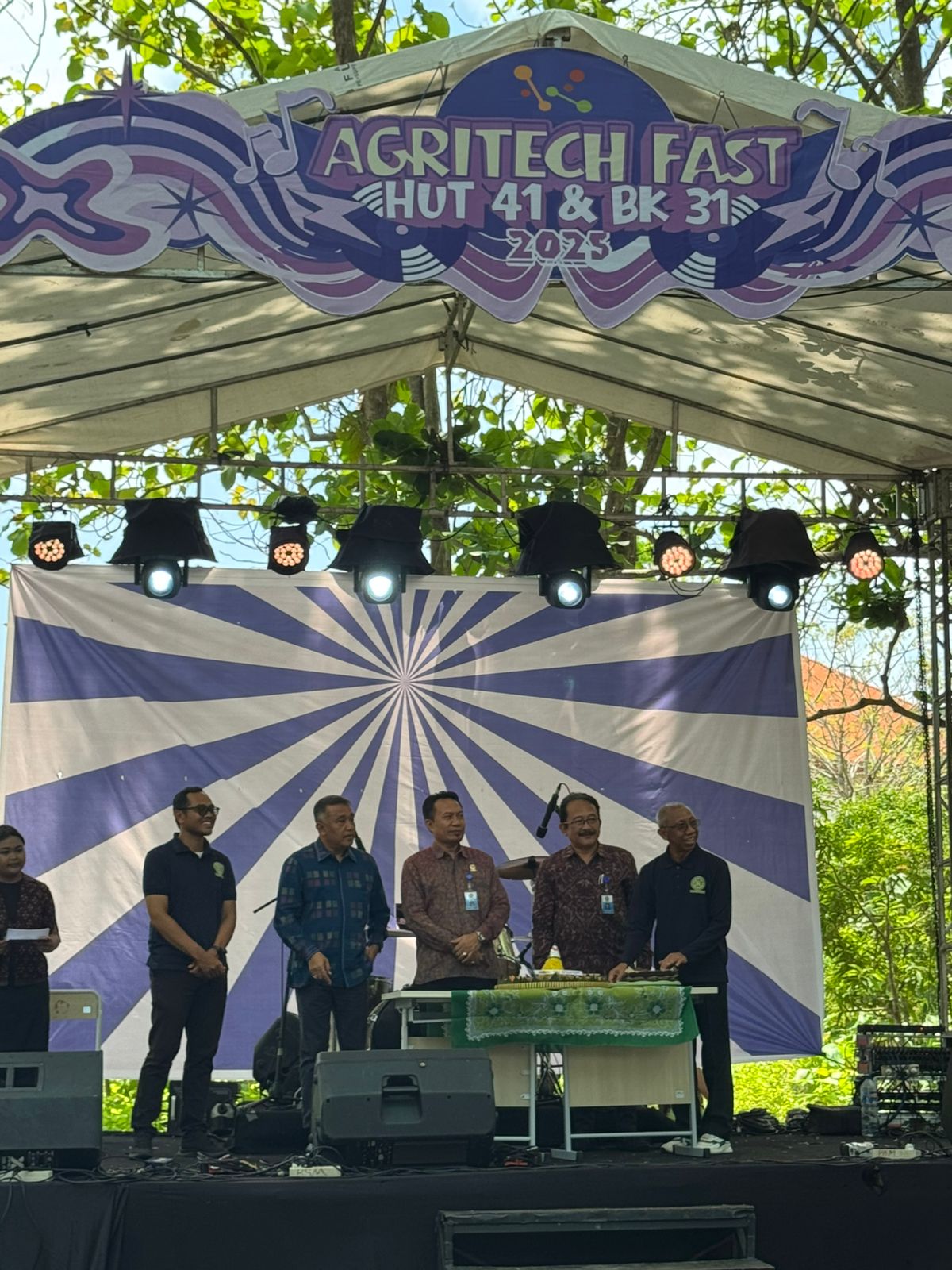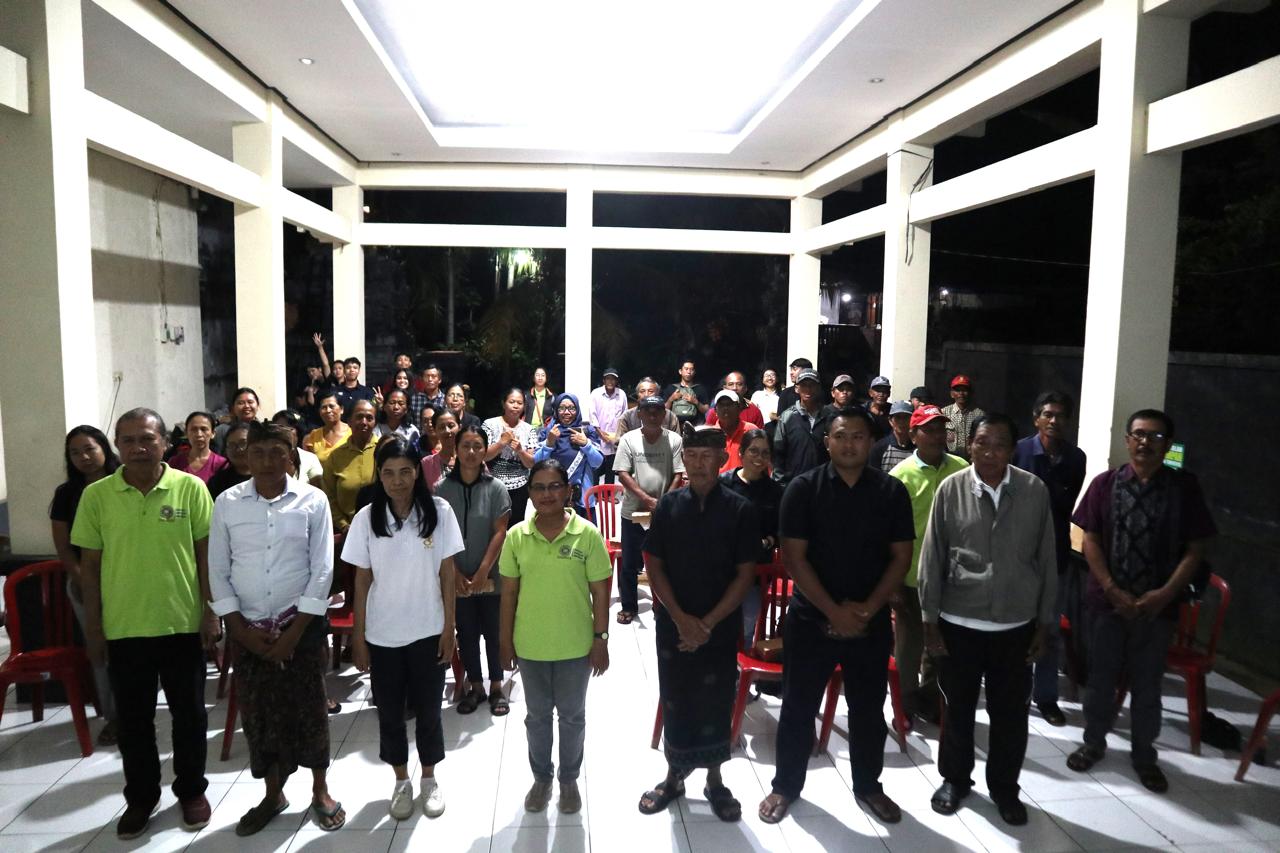Successfully Earning a Bachelor Degree in Agricultural Technology, Sinta Anggraeni Compares Initial pH and Storage Temperature of Natural Coloring Extracts of Cassava Leaves
Sinta Anggraeni, S.TP. who is often called Sinta
succeeded in obtaining a Bachelor of Agricultural Technology (S.TP.) degree on
November 16th , 2022 at the
Undergraduate Program in Agroindustrial Technology at Udayana University by conducting a
Stability Study of Cassava Leaf Color Extract (Manihot esculenta C.) at Initial
pH and Storage Temperature Treatment under the guidance of Dr. Ir. Ni Made
Wartini, M.P. and Mrs. Ni Putu Suwariani, S.TP., M.Biotech
The research being carried out is the manufacture
of natural dyes from natural ingredients of cassava leaves, this is due to the
high chlorophyll content of cassava leaves so that they have the potential as a
natural green dye. In the process of making this natural dye is done by
maceration extraction method. The maceration method is the process of soaking
samples using organic solvents at room temperature and the maceration method
can avoid damage to thermolabile compounds.
The process of making natural dyes is that cassava
leaves are cut, then washed with water to remove dirt. Furthermore, the cassava
leaves are blanched. Blanching is carried out in hot water at 100°C for
approximately 1 minute. Furthermore, cassava leaves are dried using a food
dehydrator at a temperature of 50 ± 2°C. Dried cassava leaves were crushed and
sieved using an 80 mesh sieve to form a uniform cassava leaf powder. After
obtaining cassava leaf powder, it was extracted using the maceration method
with 85% acetone solvent to obtain cassava leaf extract. The extract obtained
was then stored by adding a phosphate buffer solution, namely pH 9, 10 and 11
and stored at a cold temperature of 8oC which was kept in the
refrigerator and room temperature 28oC which was stored indoors for 7 days. So
that the most stable natural dye extract of cassava leaves is obtained.
Sinta Anggraeni reported in the resulting research
that treatment at an initial pH of 9 and a temperature of 8 ± 2ºC gave the best
stability to the cassava leaf coloring extract during storage. Storage of dye
extracts for 7 days resulted in a decrease in total chlorophyll content of
48.44%, 46.86% of chlorophyll a, 49.35% of b chlorophyll, 30.87% antioxidant
capacity, but caused an increase in the brightness level (L* ) of 29.28%, the
value of the level of redness (a*) is 62.91% and the value of the level of
yellowness (b*) is 49.02% of the control.




UDAYANA UNIVERSITY